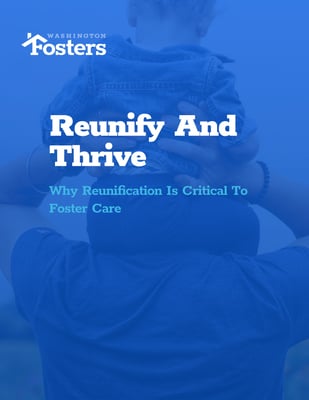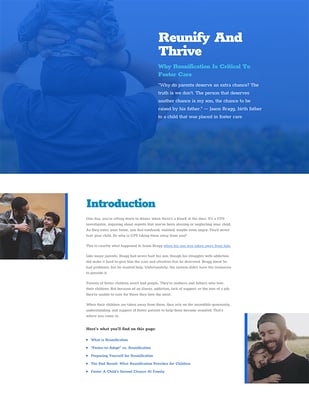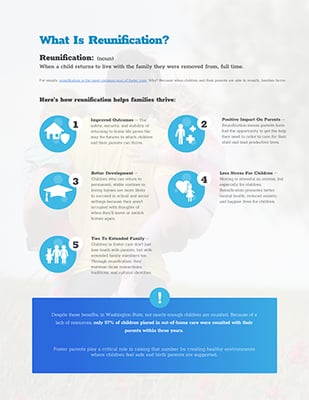Schylar Baber still has a vivid memory of the night he was taken from his mother.
Officers arrived as he was getting ready for bed. They took him and his brother while his stepfather ran out the back door. It wasn’t long before he was separated from his brother as well. Baber spent the next 12 years in foster care before he aged out, but the trauma of that night would stay with him forever.
Studies estimate that 90% of children who enter foster care experience a traumatic event in their lives. Half of those children endure four or more events. When children are taken from their homes, it’s understandably terrifying and confusing.
But the trauma often doesn’t start or end with removal.
For foster parents, understanding what trauma is, how to address it, and what role it’s played in a child’s life is critical. With the right information, foster parents become powerful allies in the process of recovery.
Read Now: Reunify And Thrive: Why Reunification Is Critical To Foster Care

What Does Trauma Mean For Foster Children?
“Trauma is an emotional response to an intense event that threatens or causes harm.” — Children’s Bureau, Parenting a Child Who Has Experienced Trauma
Nearly every foster child has at least one traumatic experience in common: being removed from their home and their family. Many share other traumas as well, including incidents of abuse or neglect, which can come in many forms.
Trauma stems from harm that can be:
- Physical or emotional
- Real or perceived
- Directed at the child or someone close to them
- A single event or many events over time
There is no hierarchy when it comes to these experiences. A child who was physically abused may be just as traumatized as someone whose parents regularly neglected to feed them. Regardless of the source, all children who experience trauma are at risk of significant negative development outcomes as they develop into adults.

The Long-Term Toll Of Trauma
Imagine a child whose parents, struggling with addiction, often left them home alone to fend for themselves.
In the moment, they might feel scared, worried, and anxious. Later in life, those events might manifest into an inability to trust others or form meaningful relationships. It could even result in behavioral issues, like eating disorders, that are more directly related to the type of neglect they experienced.
The true cost of trauma often isn’t revealed until years, or even decades, after the experience itself. Research has shown that children with a history of trauma have an increased likelihood of:
- Long-term physical, psychological, and substance abuse issues
- Poor physical health
- Lower adolescent self-esteem
- Fewer coping skills
- Poor school performance
- Less self-regulation
- Weakened critical thinking
- Reduced self-motivation
- Inability to build healthy relationships
However, with the right support, children can fight against these negative development outcomes. Foster parents play a key role in providing that support.

How Foster Parents Help Children Heal
By the time you meet a child, they may have already endured years of trauma, both in and out of the foster care system. For some children, just simply being in foster care, bouncing around to different homes, may represent some of the worst trauma they’ve experienced. But, there’s also time to start the healing process.
Positive relationships with foster parents can significantly encourage recovery, and it starts by working to identify a child’s triggers.
Triggers remind a child of past trauma and often result in erratic behavior or emotions. Triggers can be anything, even something as simple as a smell. Think of a child whose birth father always wore lots of cologne when he went out to drink. How will they feel when they smell that same cologne on a foster parent?
Identifying triggers by talking with birth parents or caseworkers can help foster parents avoid reopening old wounds. Beyond identifying triggers, there are a number of other ways foster parents can help children recover from past trauma. Here’s a small sample.
1. Be patient
Every child’s experience is different, as is their healing process. Give them time to heal and support them whenever possible.
2. Be consistent
The foster care system puts children in a sea of uncertainty. They may have moved homes several times before reaching your family.
It may take time, but establishing yourself as a beacon of stability and safety can give children the room they need to start recuperating.
3. Be flexible
Erratic behavior, unpredictable emotions, and delays in development are all common in children who have experienced trauma. Be ready to adapt to new situations and challenges.
Foster parents should also always seek support in their quest to help a child through the healing process. Support groups, other foster families, and nonprofits are ready to offer guidance to foster families who need help providing their child with a chance to feel better.
One thing support groups always advise new foster parents on is the role they can play in supporting reunification, which can drastically decrease trauma in children. Learn more about it in our in-depth guide to reunification.







